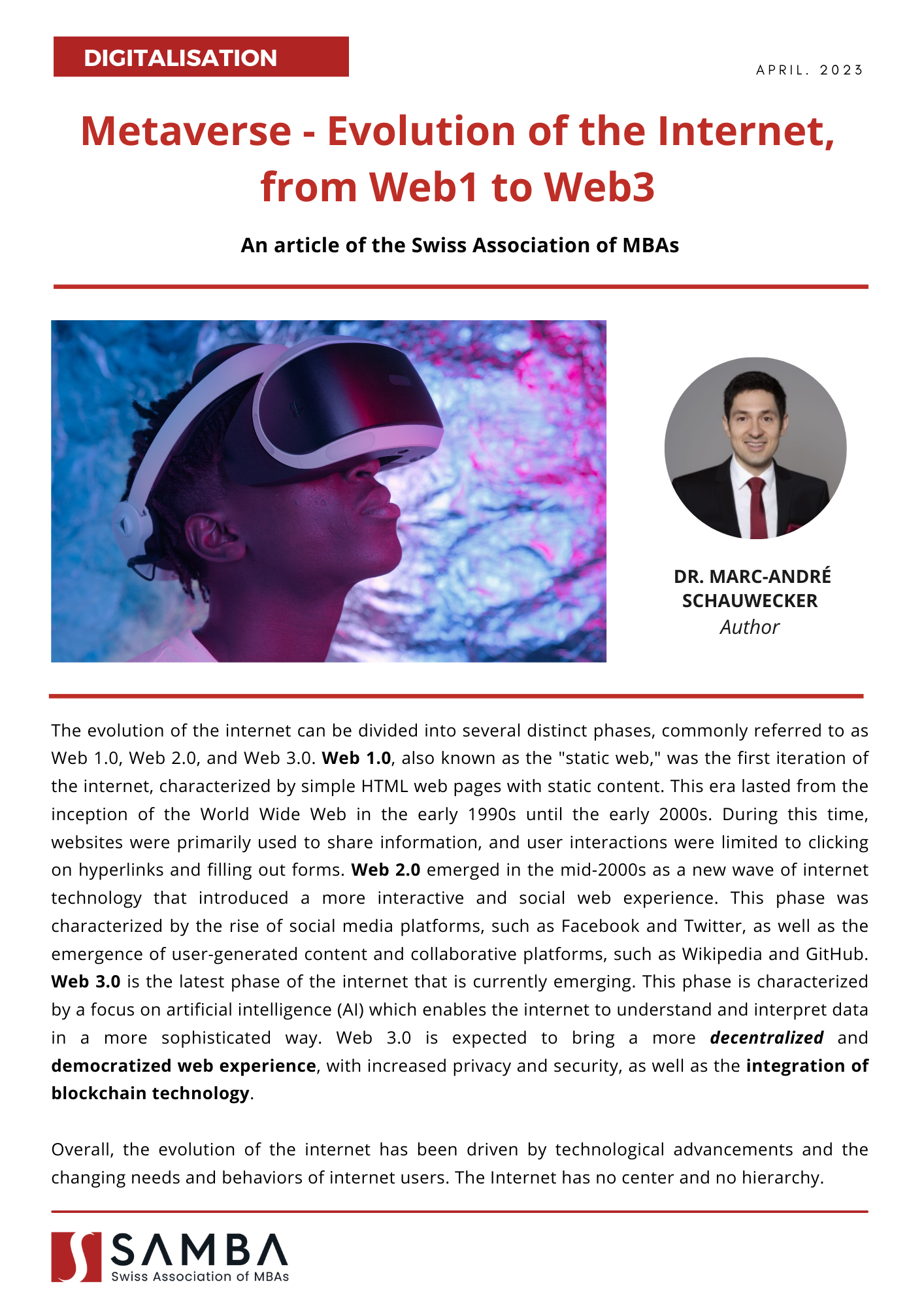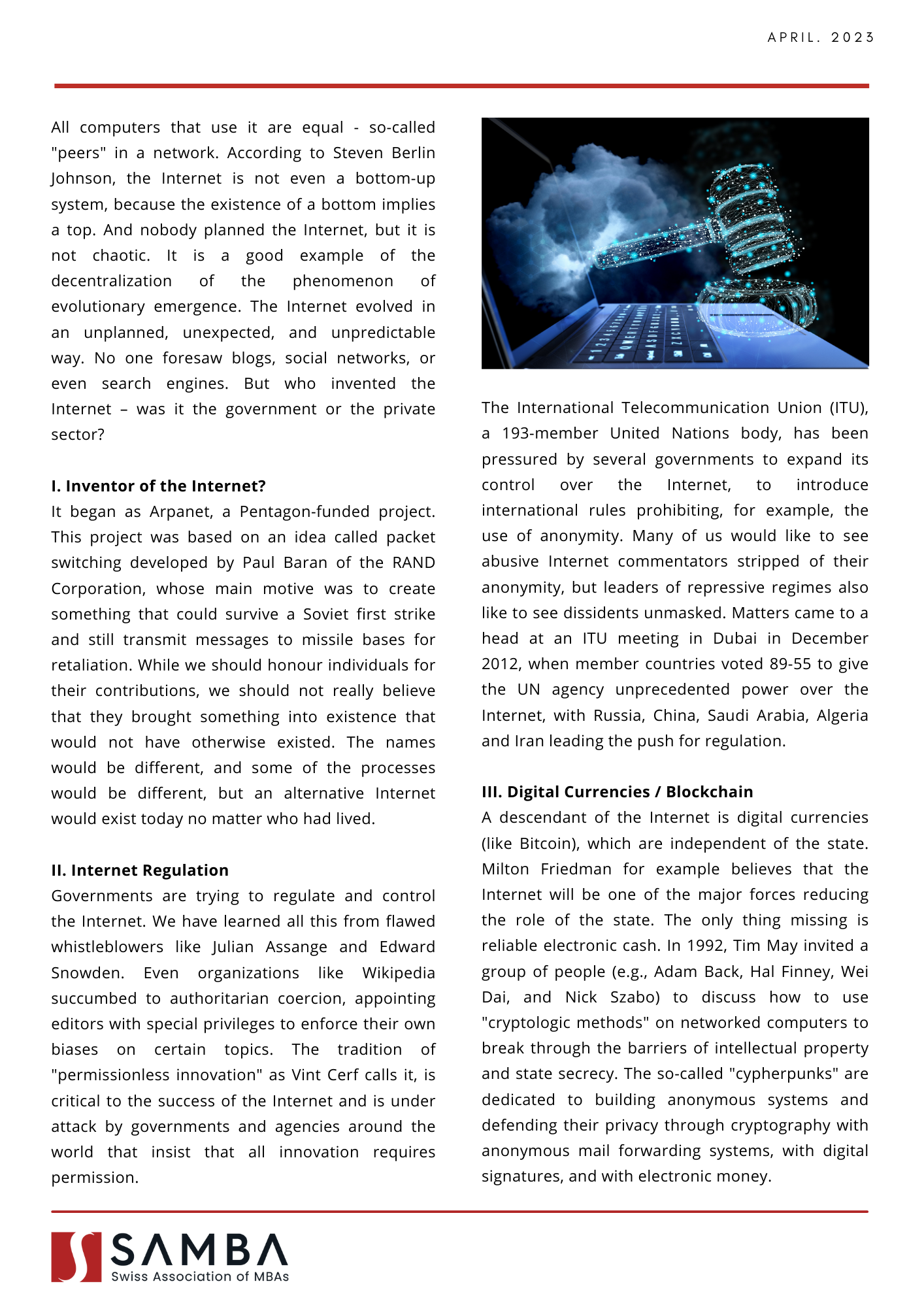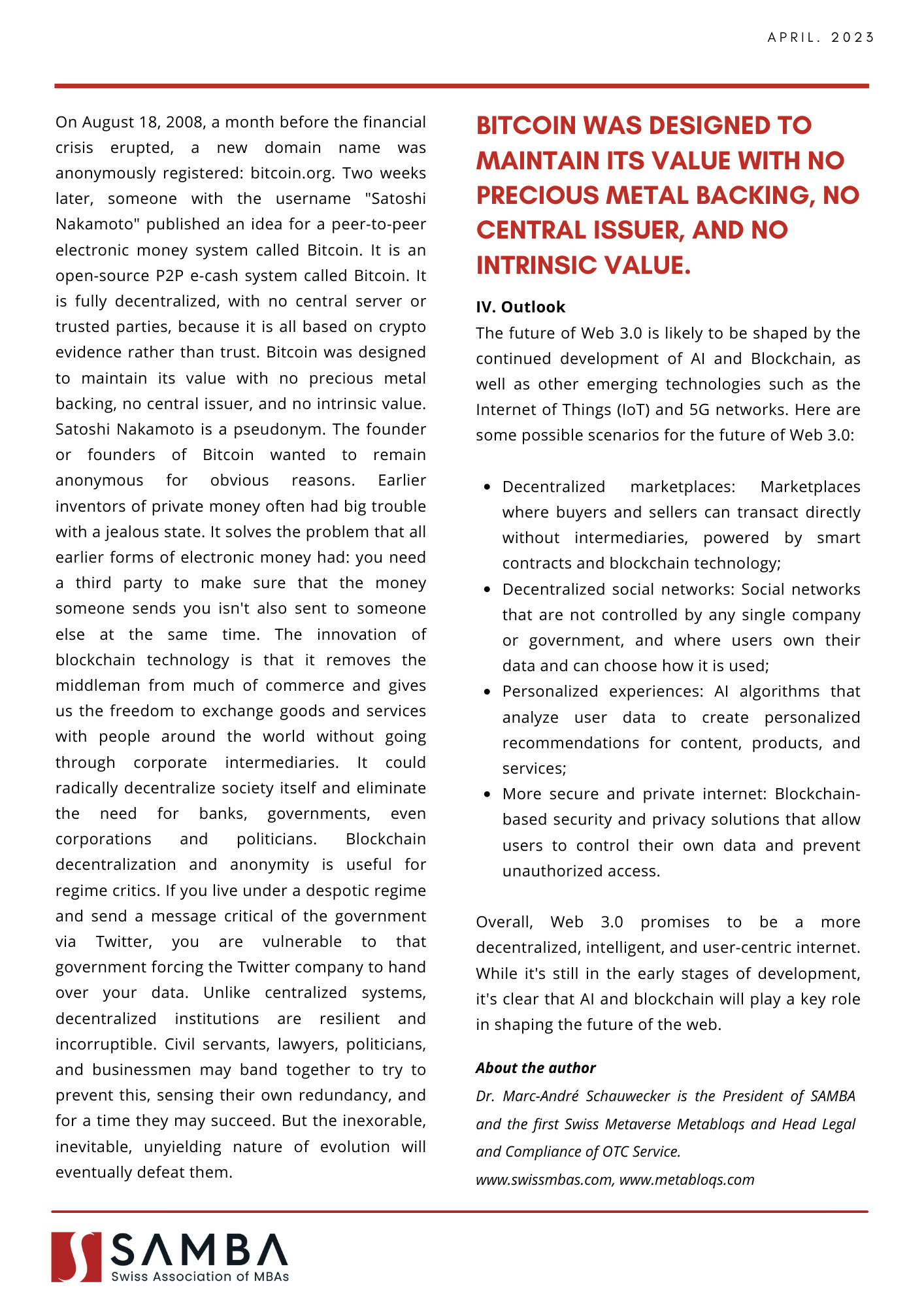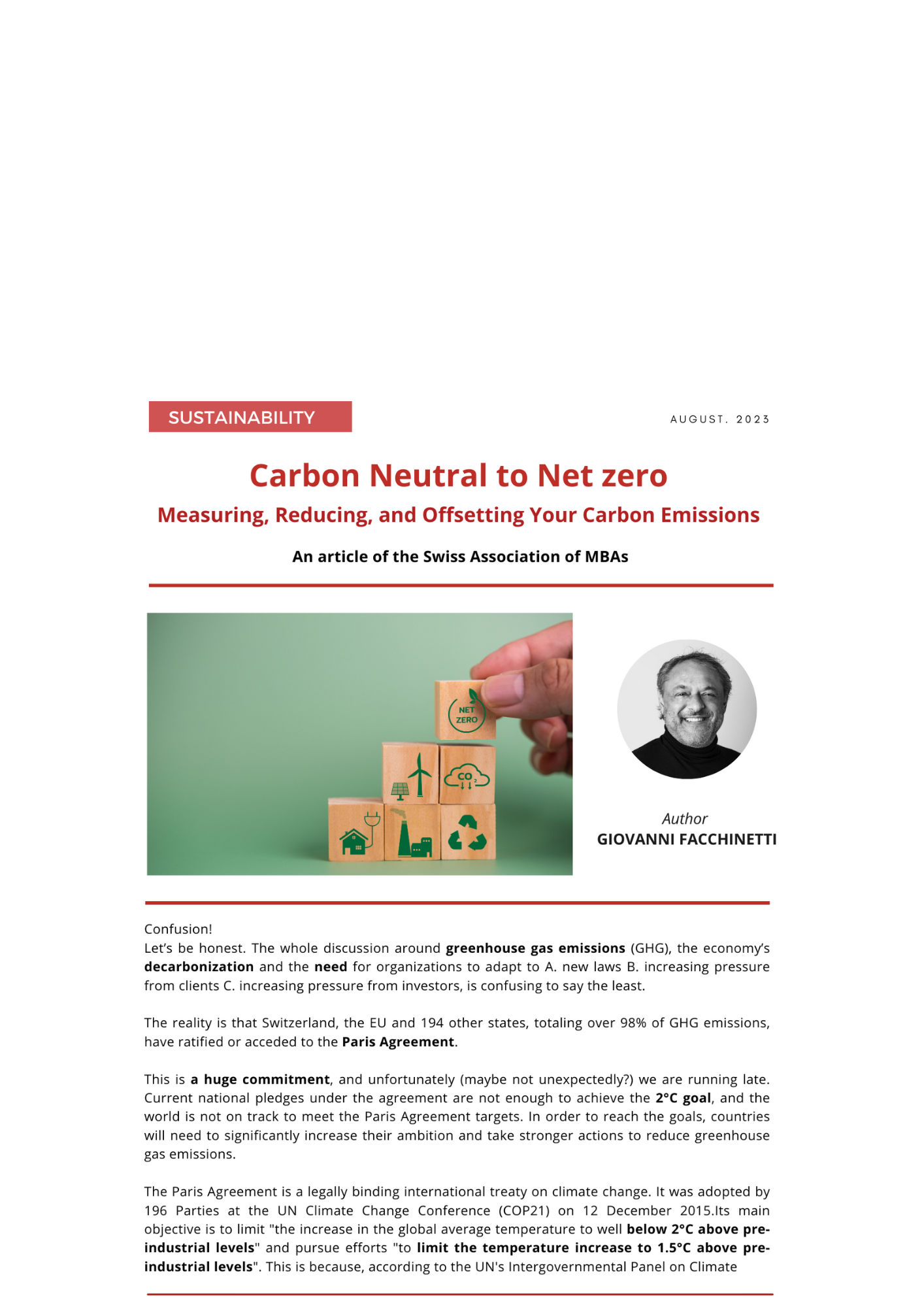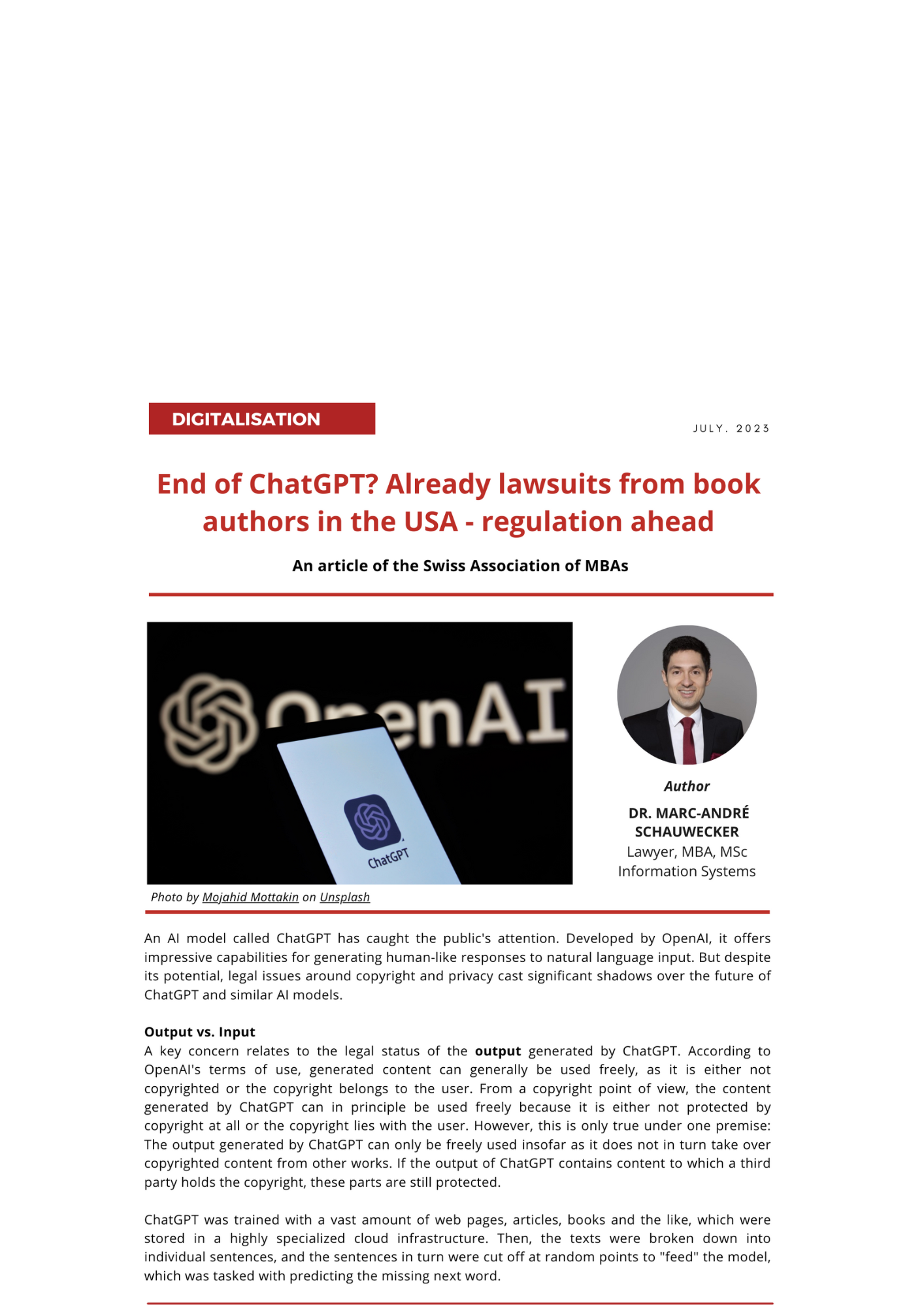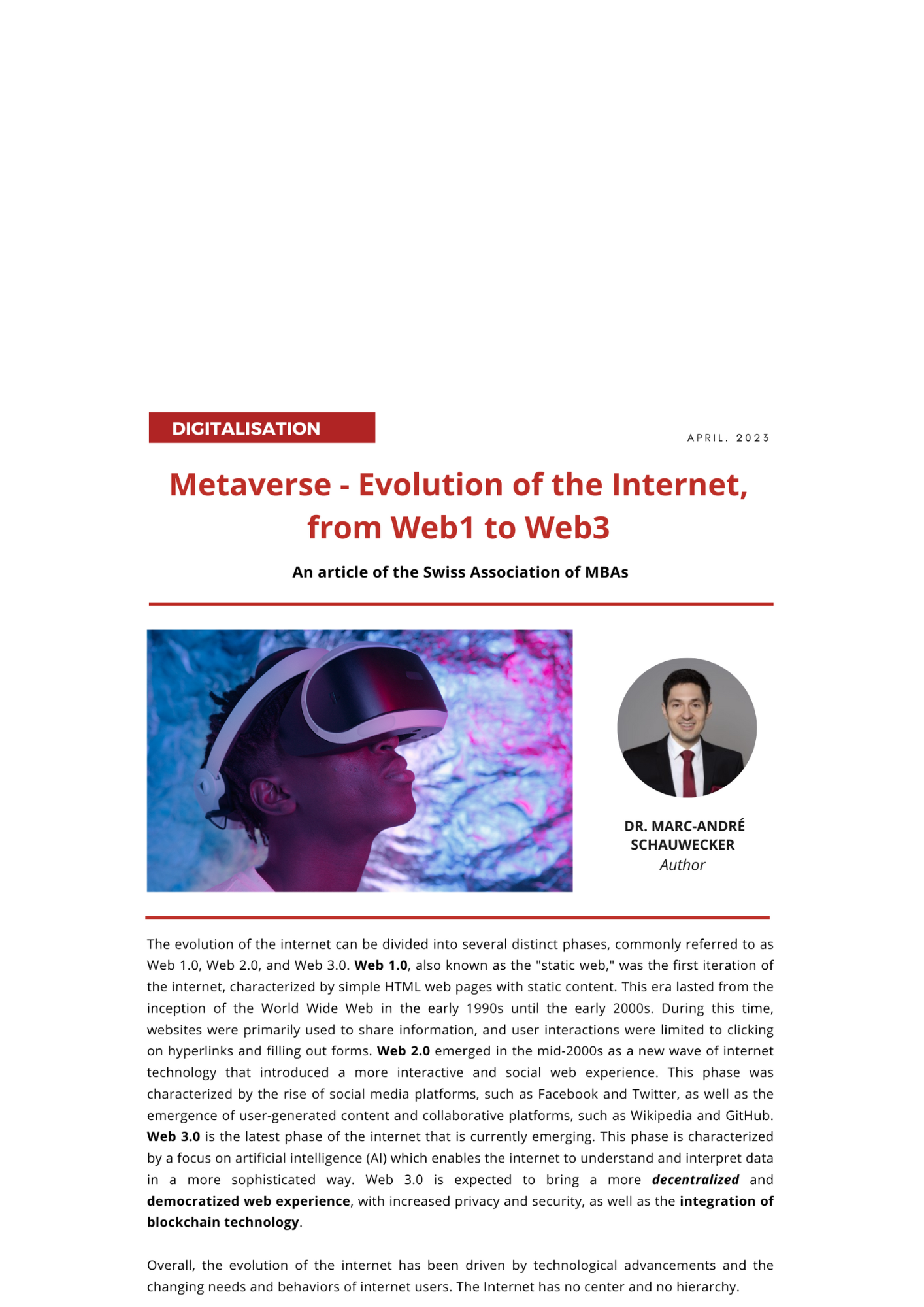
Metaverse - Evolution of the Internet, from Web1 to Web3
The evolution of the internet can be divided into several distinct phases, commonly referred to as Web 1.0, Web 2.0, and Web 3.0. Web 1.0, also known as the "static web," was the first iteration of the internet, characterized by simple HTML web pages with static content. This era lasted from the inception of the World Wide Web in the early 1990s until the early 2000s. During this time, websites were primarily used to share information, and user interactions were limited to clicking on hyperlinks and filling out forms. Web 2.0 emerged in the mid-2000s as a new wave of internet technology that introduced a more interactive and social web experience. This phase was characterized by the rise of social media platforms, such as Facebook and Twitter, as well as the emergence of user-generated content and collaborative platforms, such as Wikipedia and GitHub. Web 3.0 is the latest phase of the internet that is currently emerging. This phase is characterized by a focus on artificial intelligence (AI) which enables the internet to understand and interpret data in a more sophisticated way. Web 3.0 is expected to bring a more decentralized and democratized web experience, with increased privacy and security, as well as the integration of blockchain technology.
Overall, the evolution of the internet has been driven by technological advancements and the changing needs and behaviors of internet users. The Internet has no center and no hierarchy. All computers that use it are equal - so-called "peers" in a network. According to Steven Berlin Johnson, the Internet is not even a bottom-up system, because the existence of a bottom implies a top. And nobody planned the Internet, but it is not chaotic. It is a good example of the decentralization of the phenomenon of evolutionary emergence. The Internet evolved in an unplanned, unexpected, and unpredictable way. No one foresaw blogs, social networks, or even search engines. But who invented the Internet – was it the government or the private sector?
I. Inventor of the Internet?
It began as Arpanet, a Pentagon-funded project. This project was based on an idea called packet switching developed by Paul Baran of the RAND Corporation, whose main motive was to create something that could survive a Soviet first strike and still transmit messages to missile bases for retaliation. While we should honour individuals for their contributions, we should not really believe that they brought something into existence that would not have otherwise existed. The names would be different, and some of the processes would be different, but an alternative Internet would exist today no matter who had lived.
II. Internet Regulation
Governments are trying to regulate and control the Internet. We have learned all this from flawed whistleblowers like Julian Assange and Edward Snowden. Even organizations like Wikipedia succumbed to authoritarian coercion, appointing editors with special privileges to enforce their own biases on certain topics. The tradition of "permissionless innovation" as Vint Cerf calls it, is critical to the success of the Internet and is under attack by governments and agencies around the world that insist that all innovation requires permission. The International Telecommunication Union (ITU), a 193-member United Nations body, has been pressured by several governments to expand its control over the Internet, to introduce international rules prohibiting, for example, the use of anonymity. Many of us would like to see abusive Internet commentators stripped of their anonymity, but leaders of repressive regimes also like to see dissidents unmasked. Matters came to a head at an ITU meeting in Dubai in December 2012, when member countries voted 89-55 to give the UN agency unprecedented power over the Internet, with Russia, China, Saudi Arabia, Algeria and Iran leading the push for regulation.
III. Digital Currencies / Blockchain
A descendant of the Internet is digital currencies (like Bitcoin), which are independent of the state. Milton Friedman for example believes that the Internet will be one of the major forces reducing the role of the state. The only thing missing is reliable electronic cash. In 1992, Tim May invited a group of people (e.g., Adam Back, Hal Finney, Wei Dai, and Nick Szabo) to discuss how to use "cryptologic methods" on networked computers to break through the barriers of intellectual property and state secrecy. The so-called "cypherpunks" are dedicated to building anonymous systems and defending their privacy through cryptography with anonymous mail forwarding systems, with digital signatures, and with electronic money. On August 18, 2008, a month before the financial crisis erupted, a new domain name was anonymously registered: bitcoin.org. Two weeks later, someone with the username "Satoshi Nakamoto" published an idea for a peer-to-peer electronic money system called Bitcoin. It is an open-source P2P e-cash system called Bitcoin. It is fully decentralized, with no central server or trusted parties, because it is all based on crypto evidence rather than trust. Bitcoin was designed to maintain its value with no precious metal backing, no central issuer, and no intrinsic value. Satoshi Nakamoto is a pseudonym. The founder or founders of Bitcoin wanted to remain anonymous for obvious reasons. Earlier inventors of private money often had big trouble with a jealous state. It solves the problem that all earlier forms of electronic money had: you need a third party to make sure that the money someone sends you isn't also sent to someone else at the same time. The innovation of blockchain technology is that it removes the middleman from much of commerce and gives us the freedom to exchange goods and services with people around the world without going through corporate intermediaries. It could radically decentralize society itself and eliminate the need for banks, governments, even corporations and politicians. Blockchain decentralization and anonymity is useful for regime critics. If you live under a despotic regime and send a message critical of the government via Twitter, you are vulnerable to that government forcing the Twitter company to hand over your data. Unlike centralized systems, decentralized institutions are resilient and incorruptible. Civil servants, lawyers, politicians, and businessmen may band together to try to prevent this, sensing their own redundancy, and for a time they may succeed. But the inexorable, inevitable, unyielding nature of evolution will eventually defeat them.
IV. Outlook
The future of Web 3.0 is likely to be shaped by the continued development of AI and Blockchain, as well as other emerging technologies such as the Internet of Things (IoT) and 5G networks. Here are some possible scenarios for the future of Web 3.0:
• Decentralized marketplaces: Marketplaces where buyers and sellers can transact directly without intermediaries, powered by smart contracts and blockchain technology;
• Decentralized social networks: Social networks that are not controlled by any single company or government, and where users own their data and can choose how it is used;
• Personalized experiences: AI algorithms that analyze user data to create personalized recommendations for content, products, and services;
• More secure and private internet: Blockchain-based security and privacy solutions that allow users to control their own data and prevent unauthorized access.
Overall, Web 3.0 promises to be a more decentralized, intelligent, and user-centric internet. While it's still in the early stages of development, it's clear that AI and blockchain will play a key role in shaping the future of the web.
